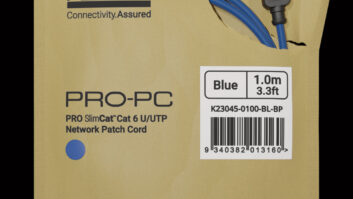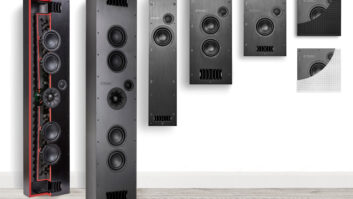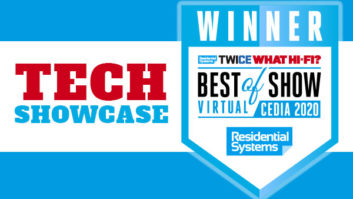Ahh, the good old days of component video!
Other than cable boxes, probably one of the most challenging and vexing things we deal with on a daily basis is HDMI. Compatibility issues, handshakes, EDID, and cables that can’t be field terminated — there is no other technology out there that presents as many challenges to our businesses, our techs, and our clients.
The issues are endless: Dealing with different resolutions across devices and displays; EDID issues with longer cables or HDMI extenders; timing issues when using older set top boxes; and on and on. After much trial and error, there are several go-to products that get used on almost every one of our jobs.

At the higher end, we are dedicated to Crestron Digital Media (DM). DM does it all. For those not familiar, DM is a modular HDMI matrix. There is a chassis with a given number of slots (8×8, 16×16, 32×32, etc). Each slot takes an input or output card. The beauty of this is that a lot of the cost is in the cards, so you only need to buy the cards you need and expansion is easy. We feel it is the best of both worlds of a traditional HDBT matrix and AVoverIP.
What we really love about it, though, is all of the EDID, handshake, and scaling is built-in. We do not need any extra hardware to ensure we have a pristine and reliable signal. Additionally, a lot of software tools are available to troubleshoot any issues that come up, including the ability to remote access the DM and see the signal paths and metadata and CEC control, which is great for cable boxes, AppleTVs, and displays. Finally, DM scales video resolutions, making it easy to mix and match 1080p and 4K displays and sources in the same system.

When we are not using DM, mostly on smaller projects or those with a lower budget threshold, we usually turn to HDMI extenders from SnapAV and Key Digital. We really like the SnapAV B560 series of extenders. They are 18 gbps with 4:4:4 color gamut, IR and RS232 passthrough, and power over cable for the receiver unit at the display. But our favorite feature is the Ethernet passthrough. This way even if there is only one Cat cable going to the TV, we can still get a video signal and a data signal to the TV, typically for IP control.

If we do not need to use the Ethernet passthrough function, our go-to is the Key Digital X444 extender. Thanks for Mark Feinberg of Home Theater Advisors for turning us onto Key Digital and their products. These have so many features that make our life easier — all of the features of the SnapAV B560 and with full EDID management (with a dial on the transmitter) and timing and handshake correction circuitry. We never have a problem with a device not handshaking when using these extenders — even troublesome devices like Rokus and cable set top boxes. Key Digital also makes a great HDMI switch that has the same timing and handshake circuitry and allows EDID management using the included remote control. We often will use the HDMI switch in conjunction with the Snap or KD HDMI extender, or a legacy extender on a take over job.

Finally, if you are not putting any of these products into a project, but are having some kind of EDID, handshake, or timing problem, there is the Key Digital KD-FIX418. This Swiss Army knife of HDMI fixers handles EDID management, HDCP, boosts the signal, manages hot plug, and more. If you are having an HDMI issue, install this little miracle and chances are you’ll be on your way in no time.
These products are fantastic and work for us. The key is to find what works for you, your business, and your customers. Then get to know the product really well — install it in your showroom, talk to tech support, talk to the sales team. And be sure to keep some in the truck for that inevitable time when you’ll really need it.







